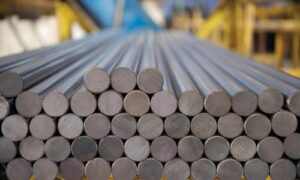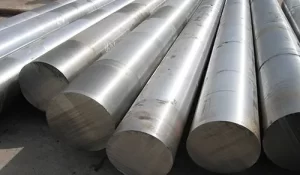Corrosion is the relentless adversary of metal, silently gnawing away at its structural integrity. Amid this perpetual battle, 316 stainless steel round bars emerge as champions, renowned for their remarkable corrosion resistance. In this comprehensive exploration, we will delve deep into the corrosion resistance features that define 316 stainless steel round bars, uncovering the science behind their ability to withstand the most aggressive environments.
Unveiling the Power of 316 Stainless Steel
Understanding the Alloy
Before we embark on our journey into the corrosion-resistant realm of 316 stainless steel, let’s take a moment to grasp the basics:
- Chemical Composition: 316 stainless steel, a member of the austenitic family, primarily consists of iron, chromium, nickel, and a dash of molybdenum. This unique blend is the key to its corrosion-resistant properties.
- Chromium’s Shield: Chromium, present in substantial amounts (16-18%), forms a protective oxide layer on the steel’s surface. This passive layer acts as a barrier, preventing corrosive substances from infiltrating the metal beneath.
- Nickel’s Contribution: Nickel (10-14%) enhances the alloy’s resistance to corrosion, even in acidic environments. It also lends 316 stainless steel its lustrous appearance.
- Molybdenum’s Magic: Molybdenum (2-3%) is the secret weapon against chloride-induced corrosion. It strengthens the alloy’s defense against pitting and crevice corrosion, particularly in marine settings.
Now, let’s explore the corrosion resistance features that make 316 stainless steel round bars the superheroes of the metal world.
The Formidable Corrosion Resistance of 316 Stainless Steel
1. Pitting Corrosion Resistance
Pitting corrosion is a localized form of corrosion characterized by small pits or craters on a metal’s surface. 316 stainless steel’s chromium-rich composition makes it highly resistant to pitting corrosion, even in aggressive environments containing chlorides, such as seawater. This attribute is invaluable in maritime applications, where exposure to saltwater is constant.
2. Crevice Corrosion Resistance
Crevice corrosion occurs in narrow gaps or crevices where stagnant or low-velocity fluids accumulate. 316 stainless steel excels in this area as well, thanks to its molybdenum content. It resists crevice corrosion, ensuring the long-term integrity of components in challenging environments like chemical processing plants.
3. Resistance to Acids and Bases
316 stainless steel’s resistance to a wide range of acids, including sulfuric, hydrochloric, and acetic acids, makes it suitable for chemical applications. It can withstand the corrosive effects of these substances, ensuring equipment longevity in chemical processing industries.
4. Resistance to Organic Corrosion
In addition to inorganic corrosive agents, 316 stainless steel round bars exhibit excellent resistance to organic acids and compounds. This property extends their use to industries involving organic chemicals and substances.
5. Oxidation Resistance
316 stainless steel retains its structural integrity and aesthetics even at elevated temperatures. This oxidation resistance makes it an excellent choice for applications involving heat, such as industrial ovens and exhaust systems.
FAQ: Addressing Common Queries
Q1. Is 316 stainless steel completely immune to corrosion?
While 316 stainless steel is highly corrosion-resistant, it is not entirely immune to corrosion under extreme conditions. Proper care and maintenance are essential to maximize its longevity in corrosive environments.
Q2. Can 316 stainless steel withstand exposure to harsh chemicals?
Yes, 316 stainless steel is well-suited for exposure to a wide range of chemicals, including acids and bases. However, compatibility with specific chemicals should be verified for each application.
Q3. Is 316 stainless steel suitable for outdoor applications?
Yes, 316 stainless steel is an excellent choice for outdoor applications due to its resistance to corrosion in various weather conditions. It is commonly used in architectural elements, marine equipment, and more.
Q4. How does 316 stainless steel compare to other stainless steel alloys in terms of corrosion resistance?
316 stainless steel is renowned for its corrosion resistance, especially in chloride-rich environments. It outperforms many other stainless steel alloys in this regard, making it a preferred choice for marine, chemical, and medical applications.
In Conclusion
316 stainless steel round bars represent a pinnacle of corrosion resistance in the world of metals. Their ability to combat pitting corrosion, crevice corrosion, exposure to acids and bases, and resistance to oxidation sets them apart as a premier choice for industries where durability and reliability are paramount. Whether beneath the sea, in a chemical processing plant, or under the scorching heat, 316 stainless steel round bars stand as guardians of structural integrity, ready to take on the harshest of environments.


